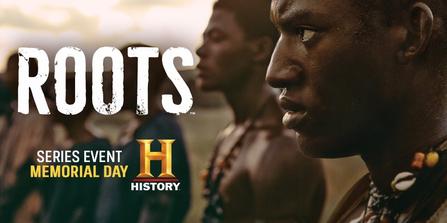‘Roots’ Remake Strong for Kids, But Tells Brutal Truths
Almost four decades after the original, the History Channelreimagining of Alex Haley’s account of his family history goes into uncomfortable, but necessary details
By Deborah Douglas, May 30, 2016
The Memorial Day airing of the History Channel’s reimagined slavery epic Roots ain’t your mama’s Roots from back in the day. While many kids in 1977 stayed up well past bedtime watching the original, this 2016 version of the much-touted miniseries is rated TV-14 for a reason.
The brutality and bloody, violent imagery is a lot to process, according to Dr. Daina Ramey Berry, a University of Texas at Austin slavery expert and history consultant to the eight-hour miniseries, which airs at 9 p.m., Monday on the History Channel. It may be challenging for teens, and children will certainly hear about if even if they’re not watching each night.
“It’s graphic and very much in line with what’s going on in the story,” says Berry, who is trying to determine if she will allow her 10-year-old son to watch. “[With] some of the Middle Passage stuff I was thinking about my son. I would hate for kids to struggle because they see people like them, their age, getting harmed. Not just seeing violence but seeing things happen to kids. That will be scary.”
That said, this version, starring Forrest Whitaker as “Fiddler,” Anika Noni Rose as “Kizzy” and Malachi Kirby as “Kunta Kinte,” comes at a time when millions of children have seen the teenage Michael Brown laying dead on the ground in Ferguson, Missouri, after being shot by a White police officer. Some parents might argue that today’s young teens are already used to seeing violence on TV. Yet Roots could affect them differently than traditional crime stories.
If the miniseries stings, it will be for a good reason, says Berry, who appreciates the attention to historical detail and willingness to incorporate the latest scholarship about the Senegambia region where the character Kunte Kinte, Roots author Alex Haley’s forebear, lived before being given up to slave traders. The production took great pains to achieve authenticity right down to dress, construction material and style of slave quarters, and using the exact type of tobacco grown in the 18th century American south.
This remade Roots incorporates more research about Gambia and the Mandinka culture, Berry says, taking great pains to ensure characters spoke with the actual African languages spoken at the time. Research reveals Kunte Kinte came from an area that owned horses, so the same type of horse is featured in the film.
Roots doesn’t shy away from the truth about Africans’ own role in the Trans-Atlantic slave trade, either, and the series’ depiction of the Middle Passage makes “Amistad” look mild, Berry says. She describes unhealthy, emaciated bodies, and depictions of captives watching other captives dying next to them or committing suicide. There’s a mutiny scene that’s also rather graphic.
Read more at EBONY http://www.ebony.com/black-history/roots-reboot-historian#ixzz4BilUeWTf

